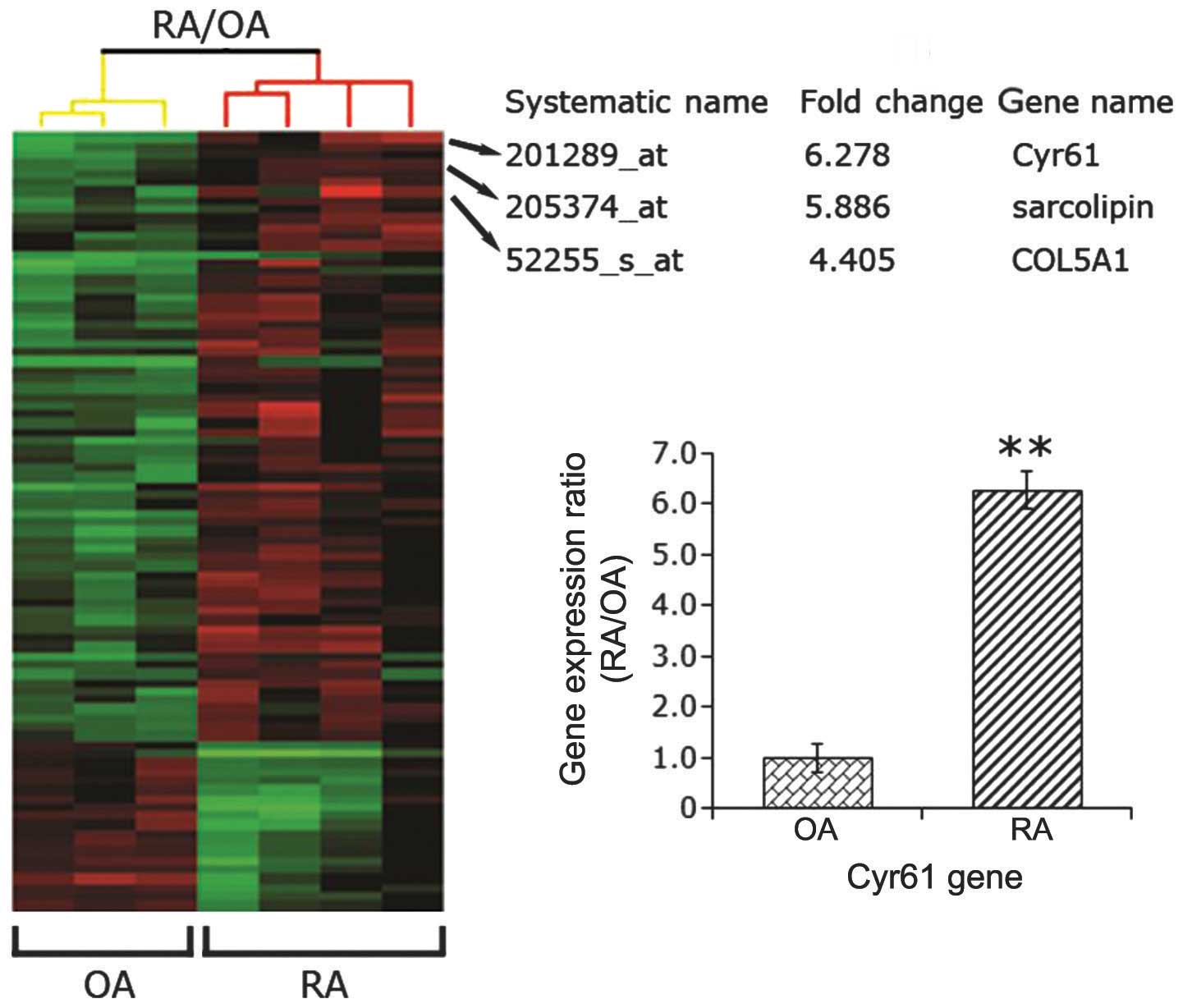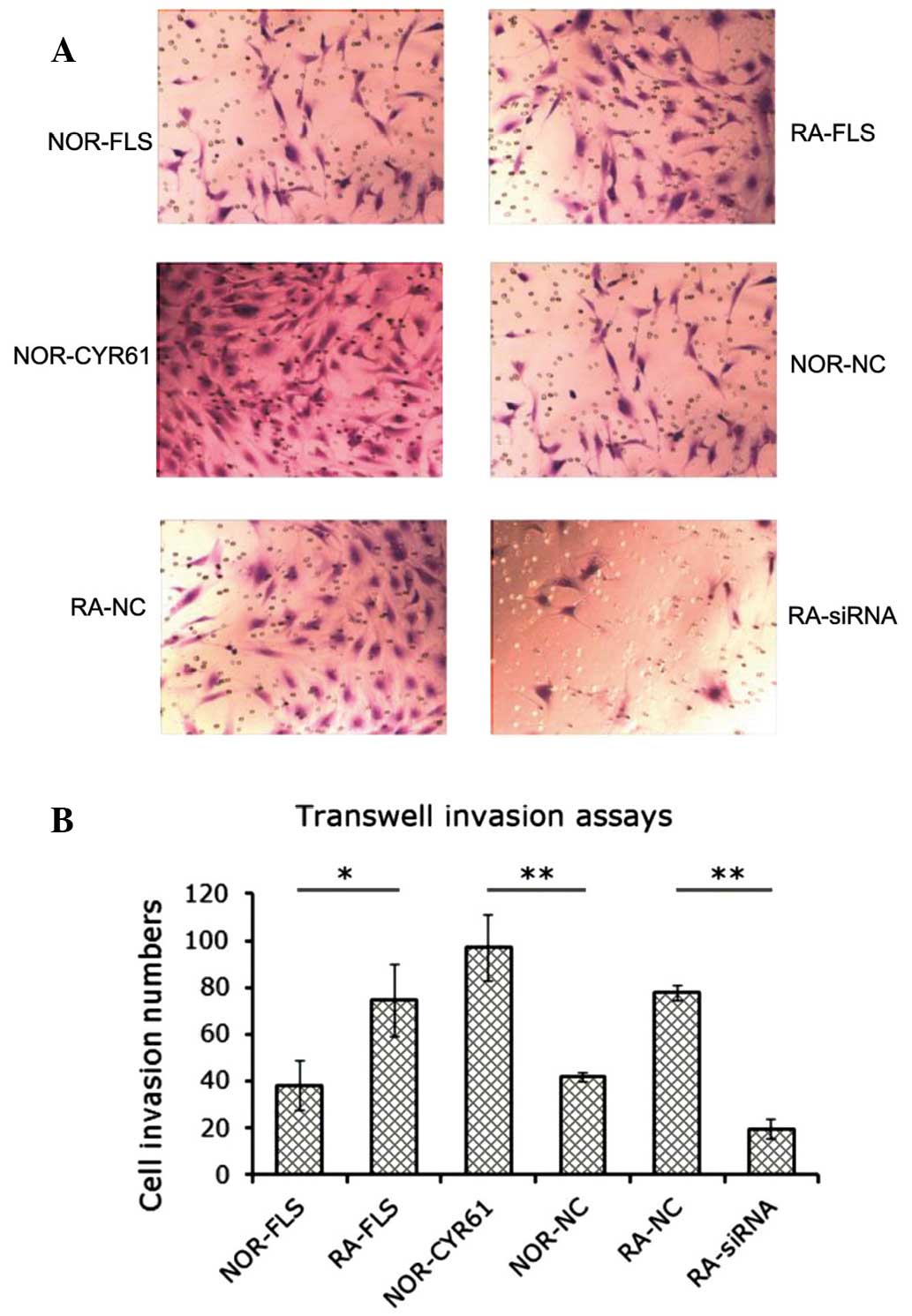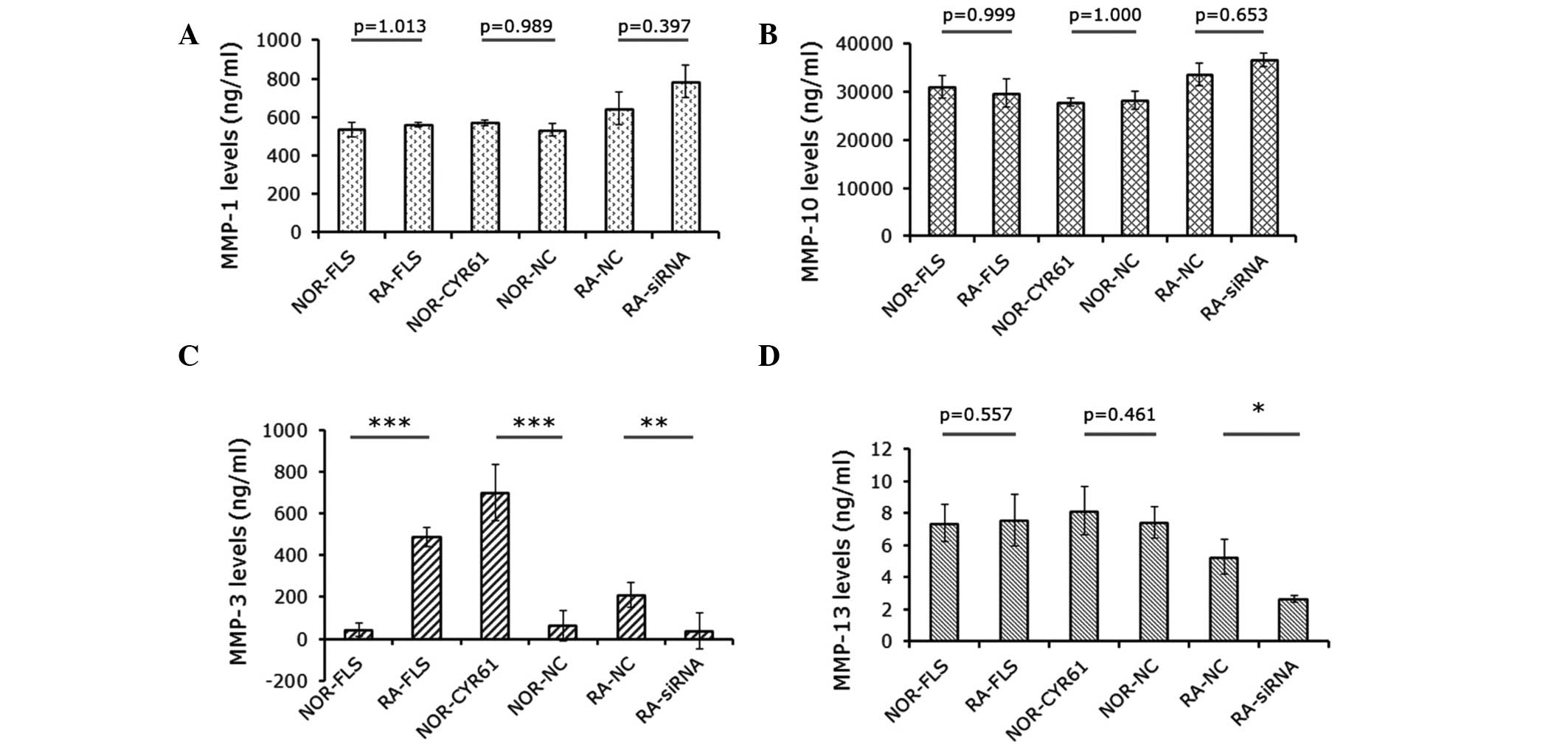Role of cysteine‑rich angiogenic inducer 61 in fibroblast‑like synovial cell proliferation and invasion in rheumatoid arthritis
Corrigendum in 10.3892/mmr.2022.12901
- Authors:
- Published online on: October 27, 2014 https://doi.org/10.3892/mmr.2014.2770
- Pages: 917-923
-
Copyright: © Jie et al. This is an open access article distributed under the terms of Creative Commons Attribution License [CC BY_NC 3.0].
Metrics:
Total
Views: 0 (Spandidos Publications: | PMC Statistics:
)
Total PDF Downloads: 0 (Spandidos Publications: | PMC Statistics:
)
Abstract
Cysteine‑rich angiogenic inducer 61 (Cyr61) is a novel molecule that has been shown to be increased in the synovial tissues of patients with rheumatoid arthritis (RA). The present study was conducted in order to investigate the role of Cyr61 in the pathogenesis of RA. A human genome‑wide gene assay was used to screen gene expression in synovial tissues obtained from four patients with RA and three patients with osteoarthritis (OA). To examine the role of Cyr61 in the phenotype of RA‑fibroblast‑like synovial (FLS) cells, Cyr61 expression in RA‑FLS cells was knocked down using small interfering RNA (siRNA). Normal FLS cells transduced with lentiviral vectors encoding Cyr61 cDNA were used to further explore the effects of this molecule on FLS cell apoptosis, proliferation and invasion. The study found that the Cyr61 gene was highly expressed in the synovial cells from patients with RA compared with those from patients with OA. Downregulation of Cyr61 by siRNA led to impaired cell proliferation and invasion. Furthermore, it decreased the levels of matrix metalloproteinase (MMP)‑3 and MMP‑13, and induced apoptosis in RA‑FLS cells. Conversely, overexpression of Cyr61 in normal FLS cells led to opposite effects. In conclusion, these results indicate that Cyr61 is capable of promoting RA‑FLS cell proliferation and invasion via the suppression of apoptosis and the regulation of MMP expression. Therefore, Cyr61 may be a good target molecule for the treatment and prevention of RA.















